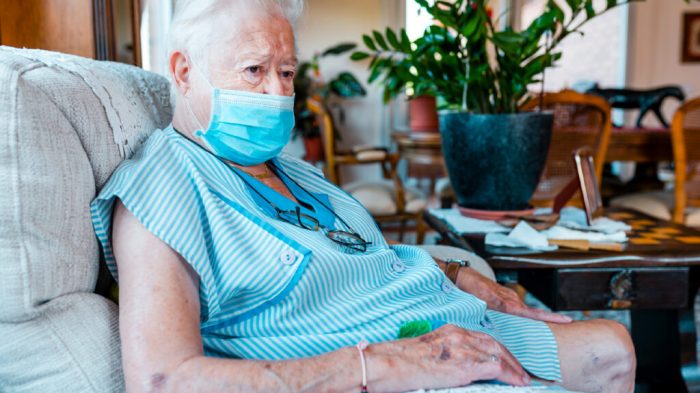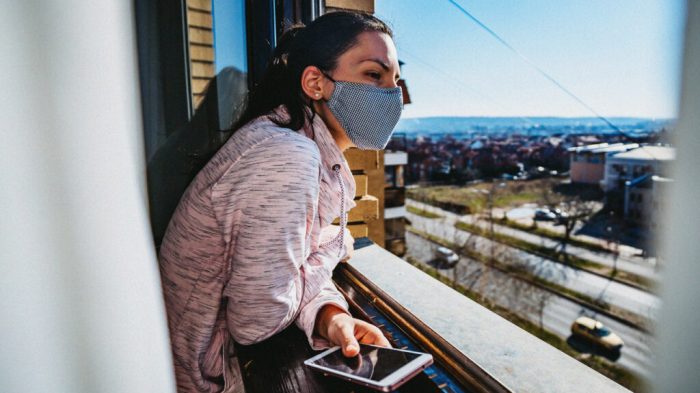A small observational study has found no evidence that osteoporosis drugs increase the risk of getting COVID-19. The research hints that some of the drugs may even reduce the risk.
In people with osteoporosis, progressive reductions in bone density increase the risk of fractures. The condition tends to affect older people, and its incidence among females increases following menopause.
Researchers have yet to directly test the possible effect of drug treatments for osteoporosis on a person’s risk of developing COVID-19. Influential health organizations, such as the American College of Rheumatology, recommend that people continue taking their medications as usual.
Now, researchers led by a team from the Hospital del Mar Medical Research Institute, in Barcelona, Spain, have analyzed data from 2,102 patients who received treatments for osteoporosis, osteoarthritis, and fibromyalgia at the hospital.
The mean age of the patients was 66.4 years, and 80.5% were female. Around 64% had osteoarthritis, 44% had osteoporosis, and 27% had fibromyalgia.
The researchers compared the incidence of COVID-19 in these patients between March 1 and May 3, 2020, with the incidence in Barcelona as a whole over the same period, during the first wave of infections in Spain.
The age-adjusted incidence rate for COVID-19 was 3.7% in the general population of Barcelona, compared with 4.7% for this group of patients. However, when the researchers focused on the subset of 914 patients with osteoporosis, they found a lower rate of infection: around 3%.
The data appeared to show that some drugs increased COVID-19 risk, some decreased it, and others had no effect. However, this was an observational study, rather than a clinical trial, and the group sizes were too small to draw any definitive conclusions.
The researchers report their findings in the journal Aging.
Statistical models
The physicians and scientists used a statistical modeling technique called Poisson regression to estimate the relative risk of COVID-19 associated with particular treatments.
After adjusting for factors already known to affect the risk, including age, sex, and health conditions such as diabetes and cardiovascular disease, their models suggested that most of the treatments had no influence on the incidence of infection.
These included drugs that directly target osteoporosis, such as oral bisphosphonates or vitamin D, as well as nonsteroidal anti-inflammatory drugs that target chronic pain caused either by fractures from weakened bones or coexisting musculoskeletal conditions.
Antihypertensive drugs, used to treat the common comorbidity of high blood pressure, also showed no influence on COVID-19 infection rates.
According to the models, three osteoporosis treatments were potentially associated with a reduced risk of COVID-19.
Denosumab, a monoclonal antibody treatment, was associated with a 42% reduced risk. There was a considerable degree of uncertainty about this value — it could range from a 72% reduced risk to a 22% increased risk.
Intravenous zoledronate was associated with a 38% reduced risk, with a range of 73% reduction to 41% increase. Meanwhile, calcium showed a 36% reduced risk, with a range of 63% reduction to 12% increase.
“The study suggests that some of these treatments may protect patients against infection by [SARS-CoV-2, the virus that causes] COVID-19, although further studies still need to be conducted on more patients to prove it,” says the study’s first author, Dr. Josep Blanch-Rubió.
Both denosumab and zoledronate are known to modify the immune system, and they do so in different ways.
Denosumab decreases the activity of immune signalling molecules called cytokines, which are involved in the excessive immune reaction that characterizes severe COVID-19.
The authors speculate that zoledronate, meanwhile, may protect the lungs from the infection by stimulating T cells and natural killer cells.
Musculoskeletal conditions such as osteoarthritis and fibromyalgia can cause chronic pain, and fractures resulting from osteoporosis can also be painful. Some pain medications commonly prescribed to people with these health issues appeared to increase the risk of COVID-19.
This was particularly true for pregabalin, which was associated with a 55% increased risk of COVID-19, with a range of estimates of 14% reduced pain to 280% increased pain.
People with these conditions also frequently experience mood disorders, such as depression. Most of the antidepressants in the analysis were associated with an increased risk, apart from duloxetine, which was associated with a 32% reduced risk, with a range of 66% decrease to 34% increase.
Dr. Alba Gurt, a study author and primary care physician at the Pere Virgili Hospital Center, in Barcelona, concludes:
“The data from the study would indicate that the [osteoporosis] treatments and duloxetine administered to our primary care patients are safe against infection by [the virus that causes] COVID-19 and could even reduce its incidence. However, studies with a higher number of patients are required to verify this.”
Important limitations
The analysis had some important limitations that are common to all observational studies. The associations identified may result from hidden “confounders” — other influences on the risk of developing COVID-19 that the researchers did not take into account.
The statistical power of the study was limited due to the relatively small numbers of patients with osteoporosis taking each medication and the possibility of complex drug interactions.
Also, the estimates of relative risk have wide confidence intervals — a term that describes the level of certainty about the risk. As a result, it is possible that denosumab, zoledronate, and calcium could all increase the risk of COVID-19, though the estimates veered more toward the drugs having a protective effect.
Overall, the actual risks or benefits of these osteoporosis treatments with regard to COVID-19 may be very different from what the team has found.










